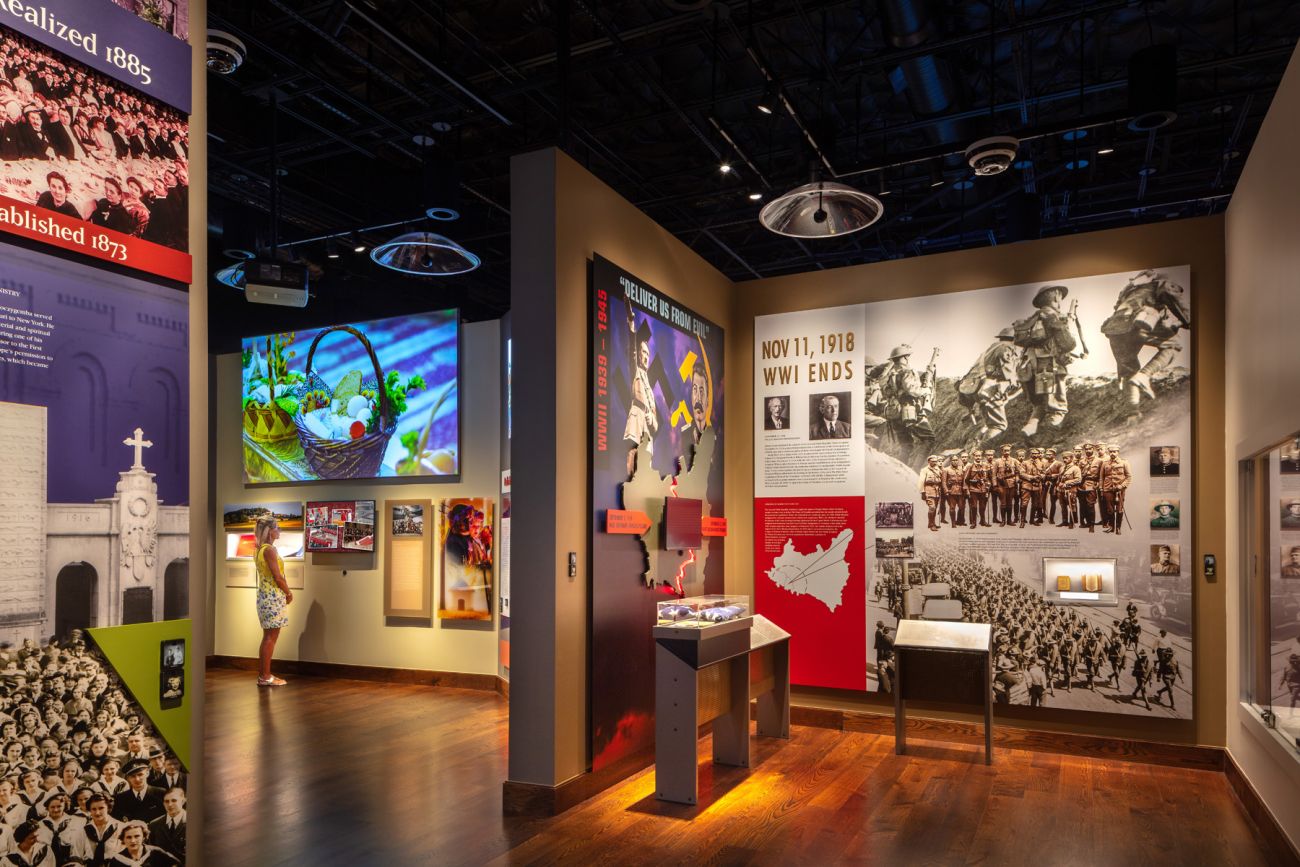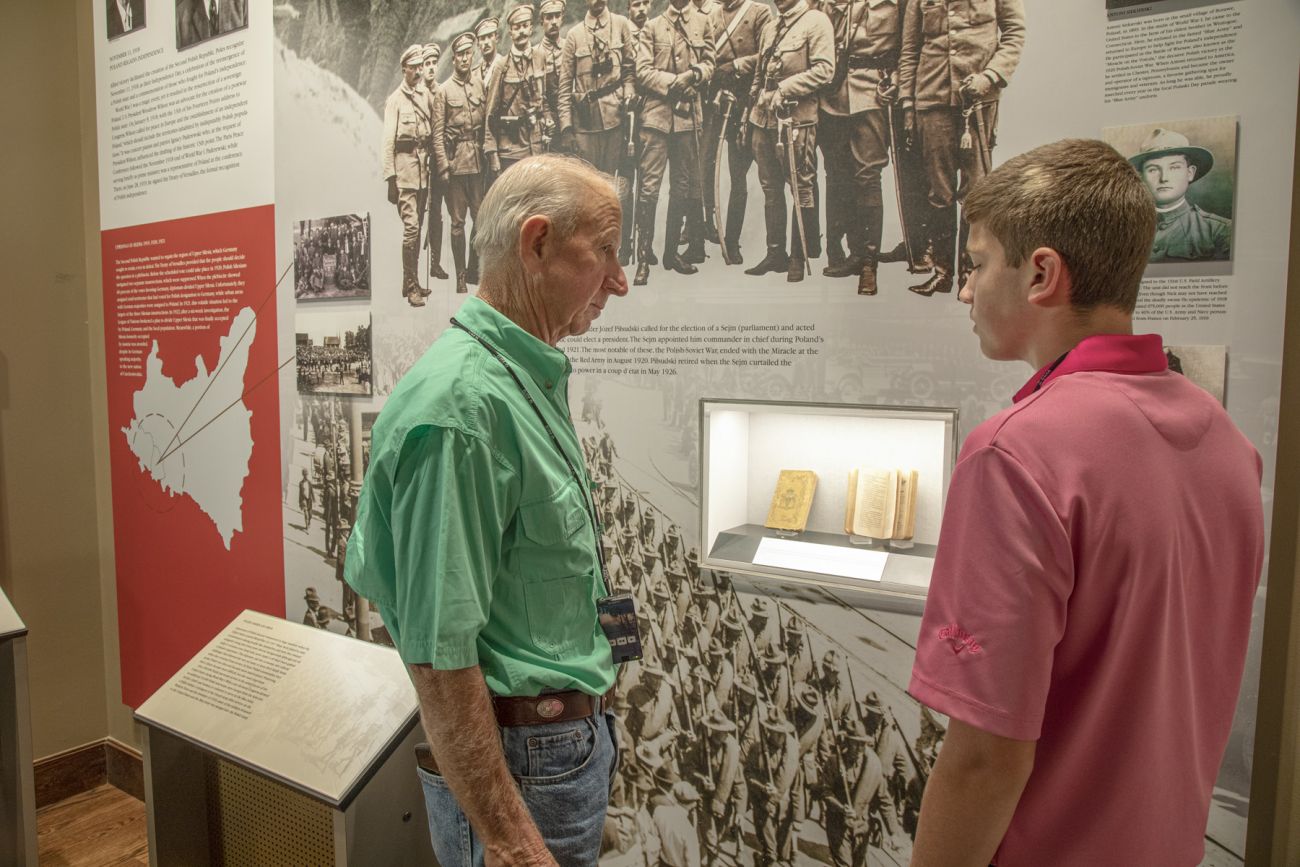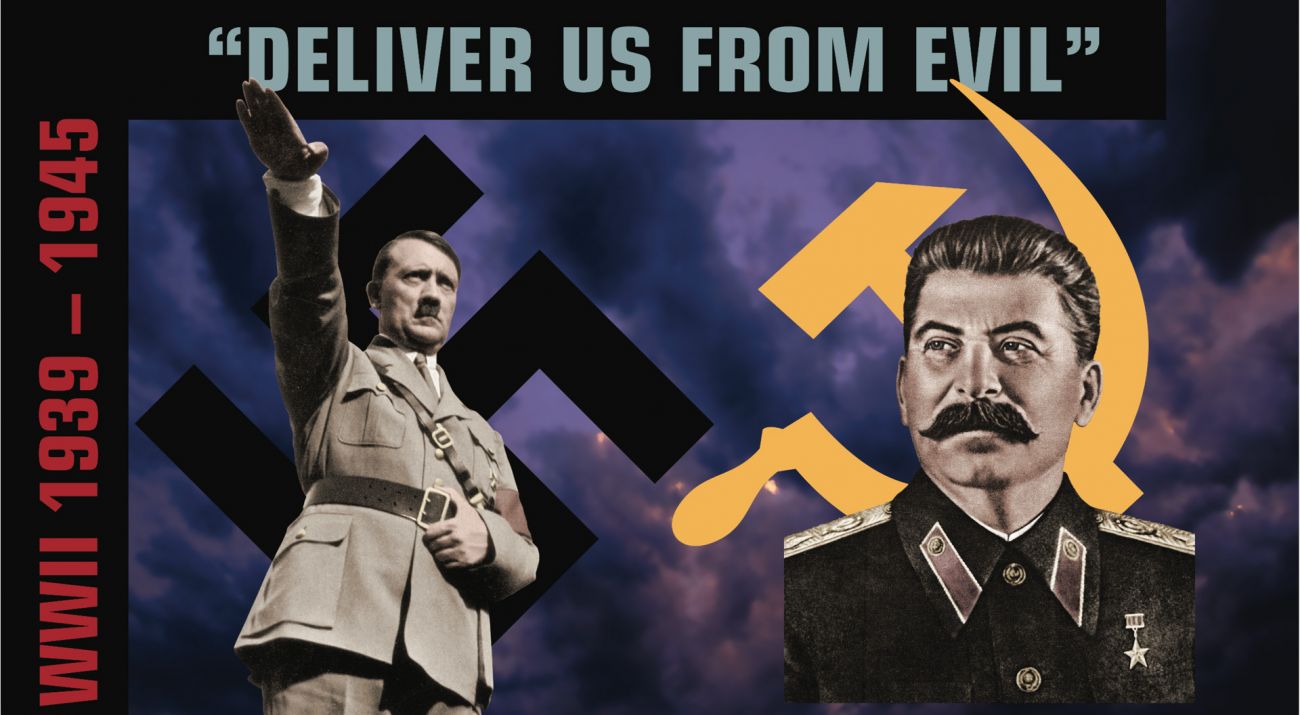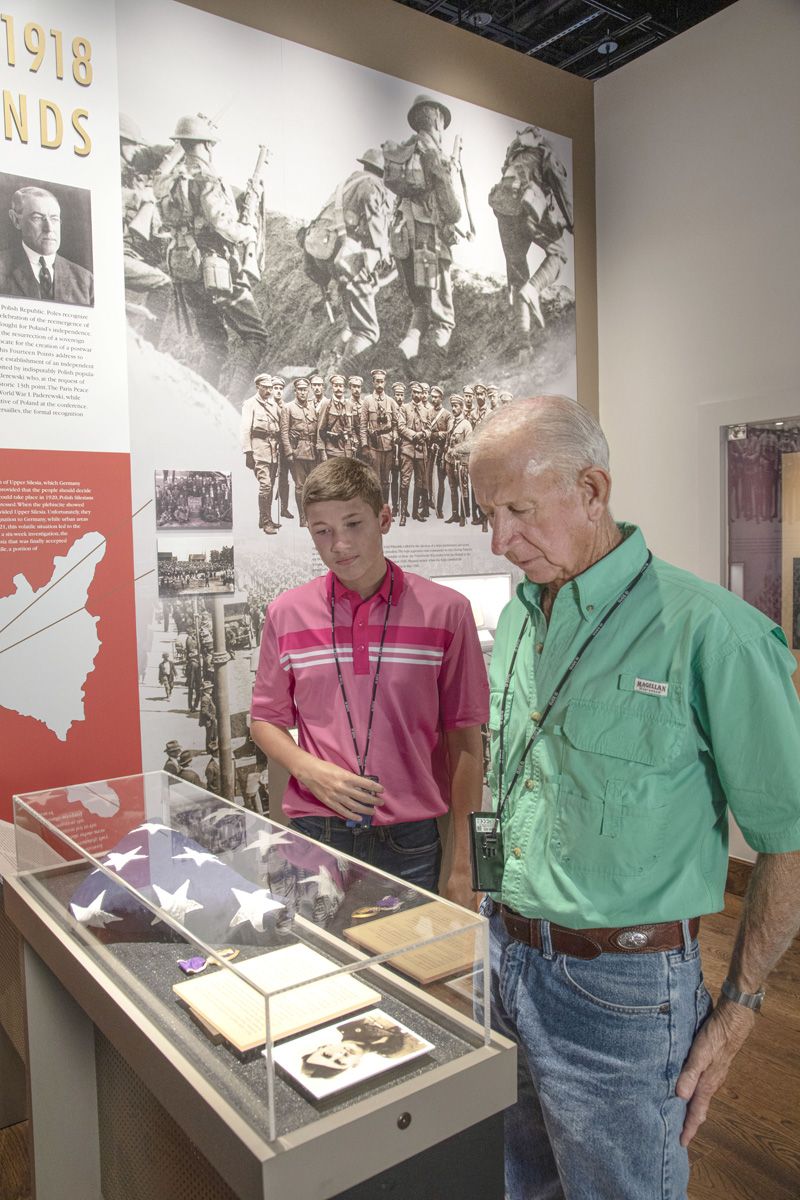
World War I
When the United States entered World War I in 1917, Americans of Polish descent volunteered in large numbers. Many were raised in rural circumstances among people like themselves, and now they trained alongside young men from more diverse backgrounds. Although not all made it overseas, even those who never made it off their bases gained a broader experience. This exposure, and the economic and cultural challenges that followed the war, led many to leave their family farms when they returned from service. In Texas’ Polish communities, they spoke Polish less often and became more Americanized. Preserving their culture became more difficult, but also more important.

Over 300,000 Polish Americans served in the armed forces of the United States during World War I. With a rare decision, Congress allowed an additional 24,000 Polish Americans, men exempt from the Selective Service (draft) and women, to volunteer to serve in the Blue Army, a Polish military contingent of the French Army. After the service on the Western Front and the Armistice of 1918, the Blue Army was merged into the Polish Army.

World War II
Nazi Germany invaded Poland on September 1, 1939. The Soviet Union, having just concluded a nonaggression treaty with Germany, was undeterred by its prior nonaggression treaty with Poland and attacked Poland on September 17. Facing invaders on two fronts, Poland was swiftly defeated.

From 1939 to 1945, the citizens of Poland were subjected to merciless mistreatment by Nazi Germany and Soviet Russia, suffering grievous human loses, perhaps seven million in all, the highest percentage of all the countries involved in the war. Poles fought on the Allied side on all fronts and in their occupied homeland, contributing greatly to the victory over Nazi Germany.
For the United States, World War II began on December 7, 1941, when the Japanese attacked pearl harbor. The war years in panna maria and surrounding communities were much the same as they were anywhere else in rural America—men went off to war; families anxiously awaited letters from their loved ones overseas; while at home, families huddled around radios listening for news from the front.